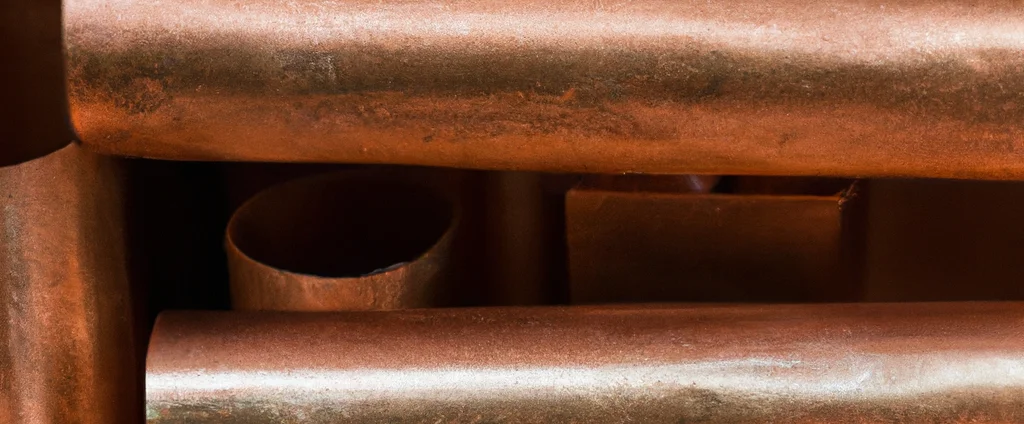Oxygen-Free Copper (UNS C10700)

Oxygen-free copper C10700 is a premium-grade copper alloy with 99.95% purity renowned for its unmatched electrical conductivity and thermal performance. It is ideal for high-efficiency electronics, RF components, and heat exchangers.
| Chemical Composition | ||
|---|---|---|
| Element | Min | Max |
| Copper | 99.85% | 99.95% |
| Silver | 0.085% | 0.12% |
The following table provides a list of copper C10700 properties in both SI and US customary/Imperial units.
Click on the button to switch between Metric and Imperial units.
| Physical Properties | Metric |
|---|---|
| Density | 8940 kg/m3 |
| Mechanical Properties | Metric |
| Tensile Strength (Ultimate) | 220 - 455 MPa |
| Tensile Strength (Yield) | 69 - 365 MPa |
| Shear Strength | 160 - 240 MPa |
| Young’s Modulus (E) | 115 GPa |
| Shear Modulus (G) | 44 GPa |
| Elongation at Break | 50% |
| Poisson’s Ratio (ν) | 0.31 |
| Thermal Properties | Metric |
| Melting Point | 1080 °C |
| Thermal Conductivity | 390 W/m·K |
| Specific Heat Capacity (Cp) | 385 J/kg·K |
| Coefficient of Thermal Expansion (αL) | 1.7×10-5 1/°C |
| Electrical Properties | Metric |
| Electrical Conductivity | 5.8×107 S/m |
| Electrical Resistivity | 1.7×10-8 Ω·m |
The values in this table are approximate and can vary depending on various factors such as the specific manufacturing process and heat treatment applied to the alloy.
Advantages & Disadvantages of Copper C10700
| Advantages | Disadvantages |
|---|---|
| Electrical conductivity | High cost |
| Thermal conductivity | Softness and ductility |
| Corrosion resistance | Susceptibility to tarnish |
| Easy to fabricate | Limited strength |
Applications of Copper C10700
Oxygen-Free Copper C10700 finds numerous applications in various industries due to its excellent electrical and thermal conductivity, as well as its corrosion resistance. Key applications include:
- Electrical and Electronic Components: Widely used in electrical and electronic components where efficient electrical conductivity is crucial. It is used in bus bars, connectors, cables, and conductors to ensure reliable and low-resistance electrical transmission.
- Heat Exchangers: Due to its good thermal conductivity, it is employed in heat exchangers where efficient heat transfer is required. It is utilized in applications such as HVAC systems, refrigeration units, and power plants.
- Heat Sinks: Used in heat sink manufacturing to dissipate heat generated by electronic components. Heat sinks made from this copper alloy efficiently absorb and transfer heat away from heat-generating devices like computer processors, power modules, and LEDs.
- Electrical Contacts: The high electrical conductivity and corrosion resistance make it an ideal choice for electrical contacts. It is used in switches, relays, connectors, and circuit breakers to ensure reliable electrical connections and minimize energy loss.
- RF (Radio Frequency) Components: Utilized in RF components such as antennas, waveguides, and transmission lines due to its excellent electrical properties. Its high conductivity helps minimize signal loss and ensures efficient transmission of high-frequency signals.
- PCB (Printed Circuit Board) Traces: Used in PCB manufacturing for creating conductive traces that connect various components on the board. Its high conductivity allows for efficient signal transmission between components.
- Medical Equipment: Employed in the medical industry for various applications. It is used in MRI (Magnetic Resonance Imaging) systems, radiation therapy equipment, and other medical devices due to its excellent electrical and thermal properties.
- Power Transmission and Distribution: Utilized in power transmission and distribution systems. It is used in overhead power lines, transformers, and switchgear due to its low resistance, high conductivity, and good corrosion resistance.
- Automotive Components: Finds applications in automotive systems, including wiring harnesses, connectors, and terminals. Its high conductivity and corrosion resistance ensure reliable electrical connections in vehicles.
- Renewable Energy Systems: Used in renewable energy systems, such as solar panels and wind turbines. It is employed in wiring, bus bars, and connectors to ensure efficient electricity generation and transmission.
